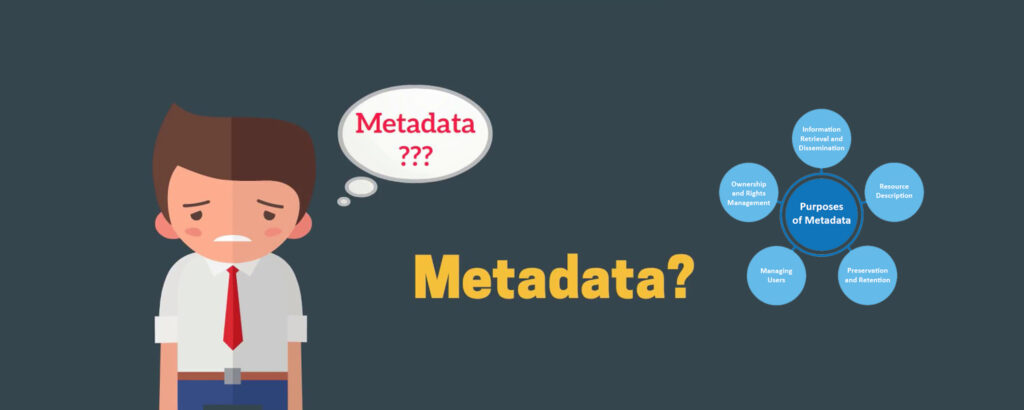What is metadata, and why does it matter?

1.1 What is Metadata?
The word “Meta” in the ancient Greek language meant “beyond,” “after,” or “behind.” The “beyond” sense of meta still lingers in words like metaphysics or meta-economy.” In simple terms, metadata is “data/information about data.” Metadata enables us to understand data’s structure, nature, and context.
Imagine any table filled with data (text or number). Data refers to text or numbers in columns and rows, and metadata relates to descriptions of those columns. Metadata helps you understand what your data means or represents.
Another excellent example of metadata is an ISBN. The ISBN is a 13-digit number that uniquely identifies books and other publications. It contains information such as the publisher, the working title, and the publication date. By which we can easily find the necessary book or publication.
Another way to understand metadata is to think of any computer file; these files have basic information about data and display metadata, including file type, time of creation, file size, author, and more.
1.2 What is Metadata management?
Metadata management assures that metadata is consistently produced, stored, and maintained in alignment with the company’s objectives and procedures.
Metadata management provides insights into the who, what, where, when, and why of data. Metadata management also provides leaders with necessary insights that lead to advanced analytics and better data-driven decisions. Therefore, the argument for all data users and company executives to contribute to continuous and sturdy Metadata management is clear.
1.3 Why does Metadata management matter?
One can define data as the total of its metadata. Metadata is what enables the creation of a complete picture of the data. In other words, metadata is necessary because it organizes data meaningfully and makes it easier to gain insights. Metadata optimizes enterprise data-driven decisions.
Further, well-managed metadata can unlock the maximum productivity potential of an entire workforce while allowing them to work smarter, not harder, along the way. Accordingly, it helps to break down information silos as data is accessible to everyone.
It is also crucial for keeping data consistent and accurate, ensuring that critical data quality metrics are monitored. Put simply; metadata is essential for overall Data Quality.
Finally, metadata accelerates compliance with laws and regulations by correctly categorizing sensitive information. Hence, it is crucial for data governance and regulatory and compliance management.
1.4 Metadata management challenges
Metadata management can present as many challenges as it provides benefits, some of which are listed below:
- – Due to its complexity, metadata management may require high-level commitment and investment.
- – Metadata management strategies require transparent processes and authentic data-gathering sources.
- – Even within one company, there are too many standards for metadata, making it difficult to assemble and prone to mistakes.
- – Implementing metadata management tools without a thorough analysis of the company’s needs may result in inefficient metadata management and even metadata control failure.- Metadata management tools should, ideally, be tailored to customers’ specific needs for the best outcome. Software selections should always be based on an enterprise’s goals.
1.5 What is a Metadata management tool?
Software programs that help capture and manage Metadata are known as Metadata management tools. They typically serve as components of systems for data governance, digital asset management, or data management.
A comprehensive metadata management tool should include at least the following features:
- – Discovery and Collection (Data Inventory)- Classification and Lineage (Standardization and data lineage)- Governance and Security (Business rules)- Integration and Provisioning (Data connectivity)
Here are a few examples of tools for Metadata management:
- – Data standardization – MetaStream- Enterprise data catalog – IRUDA- Data lineage – QTrack- Data Quality – QualityStream